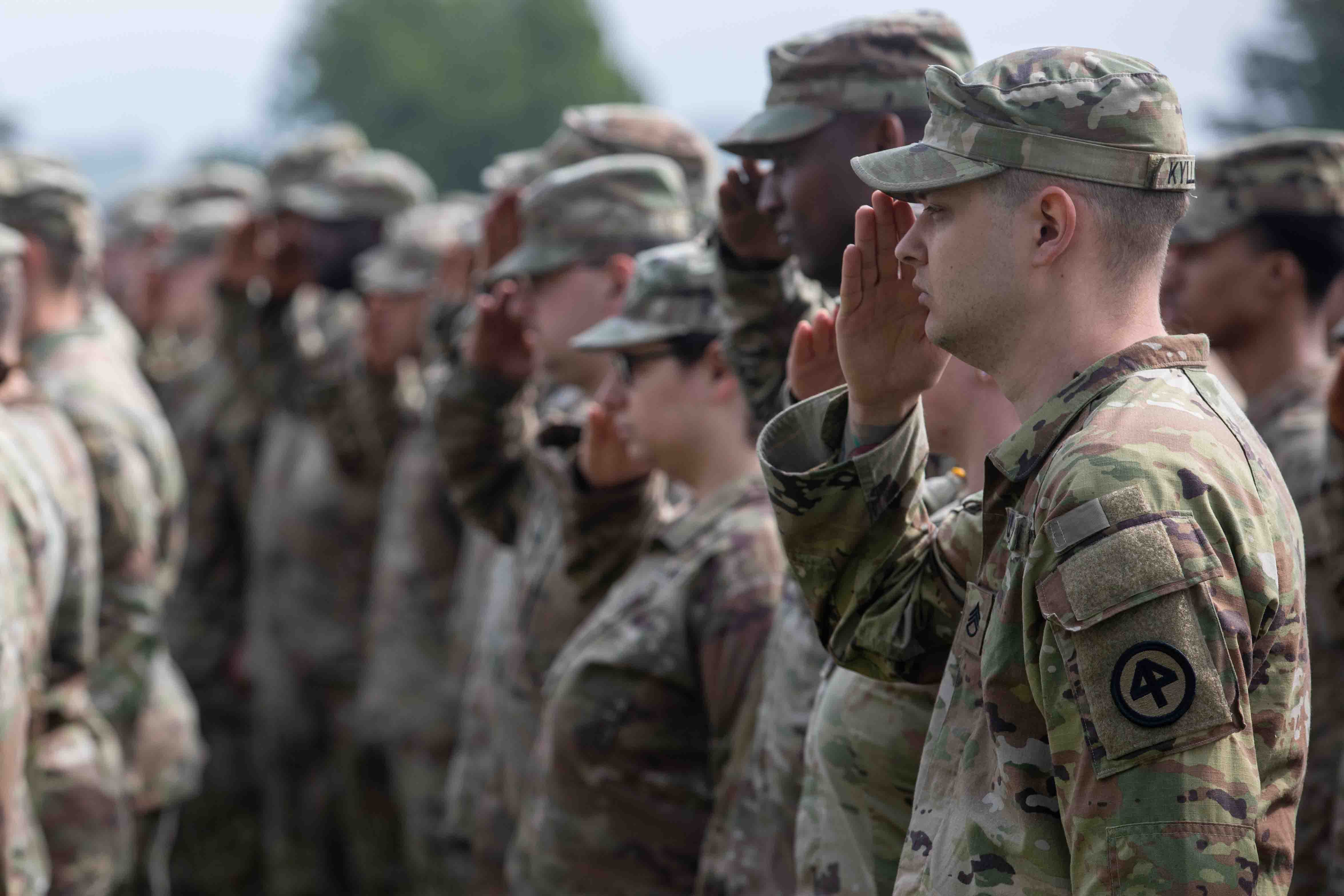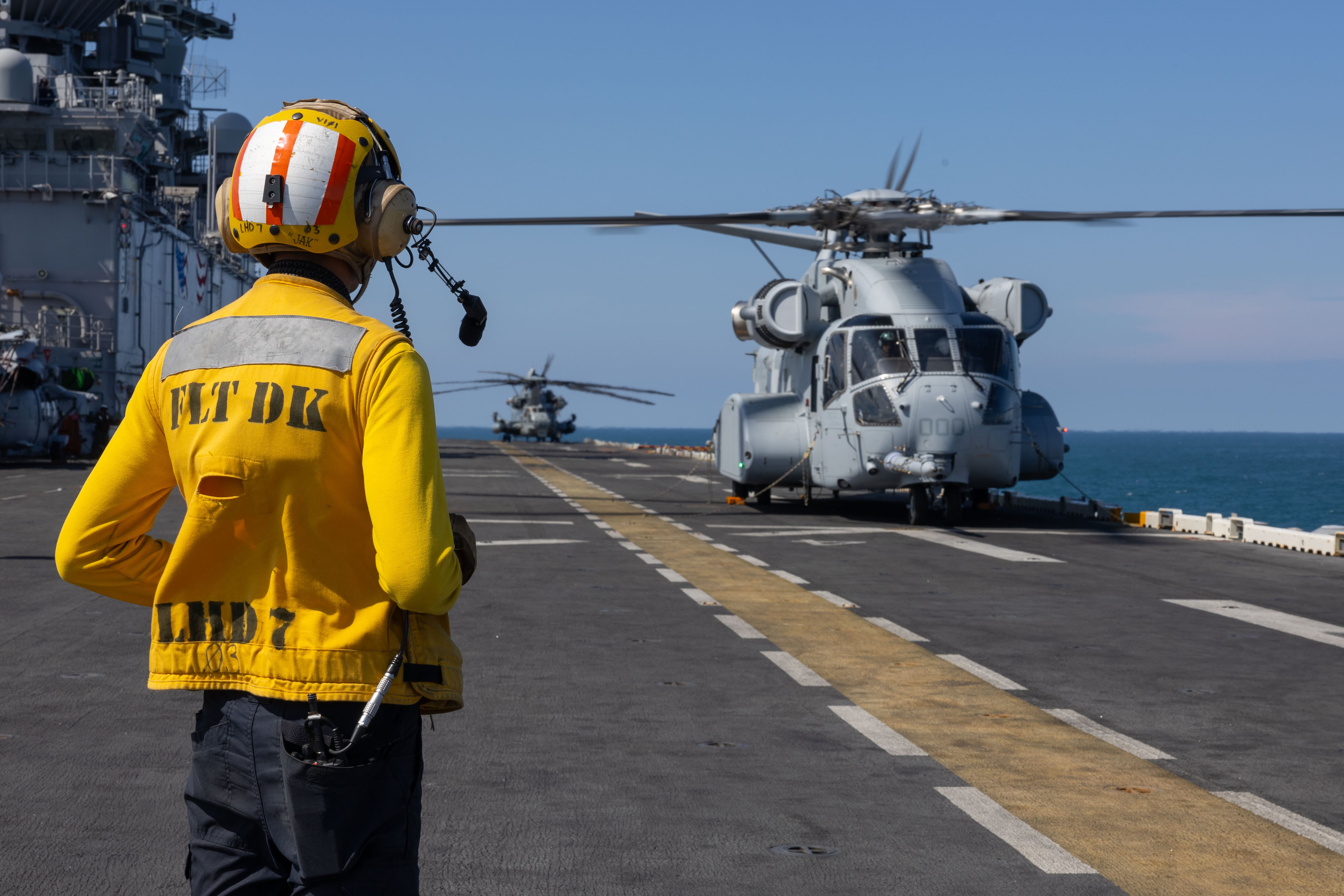Often lost in conversations surrounding military history — and most discussions on sociology — are the contributions of Native Americans.
To this day, American Indians serve in the armed forces at a higher rate than any other demographic. Since 9/11, nearly 19 percent of Native Americans have served in the armed forces, compared to an average of 14 percent of all other ethnicities.
Among the 573 federally recognized tribes — each with their own cultures, traditions, belief systems, and stances on war — military service remains remarkably consistent. No matter the conflict, American Indian men and women continue to risk their lives for the very government that once tried to eradicate their way of life.
Peter MacDonald is one such veteran. The Navajo who served in the Marines during World War II is one of the last surviving members of the distinguished Code Talkers. Jeff Means is another. A member of the Ogala Sioux Tribe and Marine Corps veteran, Means currently teaches history at the University of Wyoming. And as a member of the Odawa Nation, D.J. Vanas uses his position as an author and motivational speaker to share his experiences as an Air Force captain.
To these three, the definition of “warrior” — just like their reasons for serving — is as diverse as their tribal backgrounds.
Military Times spoke with MacDonald, Means, and Vanas about their military service, the evolution of Native American warrior culture, and treatment of Native Americans by the U.S. government during and post-military service.
Each veteran is included in the recently released PBS documentary, “The Warrior Tradition,” directed by Larry Hott. Hott also joined the discussion.
With 573 tribes, the motivations for Native Americans to join the military are incredibly diverse. What compelled you to join?
[MEANS] My reasons were financial. I had been kicking around since high school doing really a whole lot of nothing. I went to a little strip mall where all four branches had recruiting offices. The Air Force wouldn’t take me, then the Army turned me down. I got in my truck and left, but came back when I realized I hadn’t checked out the Marine Corps. I stuck my head into the office and there was this gunnery sergeant. He was like 6-foot-6 and 240 pounds of muscle. I said, “Hey, I already tried with the Air Force and Army. Should I even bother coming in?” This gunny walks over, takes me around the shoulders and says, “Son, let’s see what the Marine Corps can do for you.” [Laughs]
[VANAS] Family heritage was one of the things I was imbued with growing up through stories and firsthand experiences of relatives, including my dad, who served 21 years in the Air Force. We had relatives who served dating back to World War I. It not only seemed like a comfortable path to follow, because there’s so much familiarity, but it’s almost an expectation just because it was a common family theme.
Reservations were certainly a catalyst for stripping tribes of warrior culture. What changed in the 20th century?
[MEANS] The warrior culture was disappearing simply because by the late 1800s, there was literally no one left to fight. The whole warrior culture of protecting and providing became irrelevant up through World War I. That was a transitional time for Native Americans, because an entire generation of people who remembered having autonomy and freedom were dying off.
Instead, you now had individuals who had only ever known reservation life. Then here comes World War I and a tremendous opportunity for Native Americans to provide for themselves again and revitalize that warrior tradition.
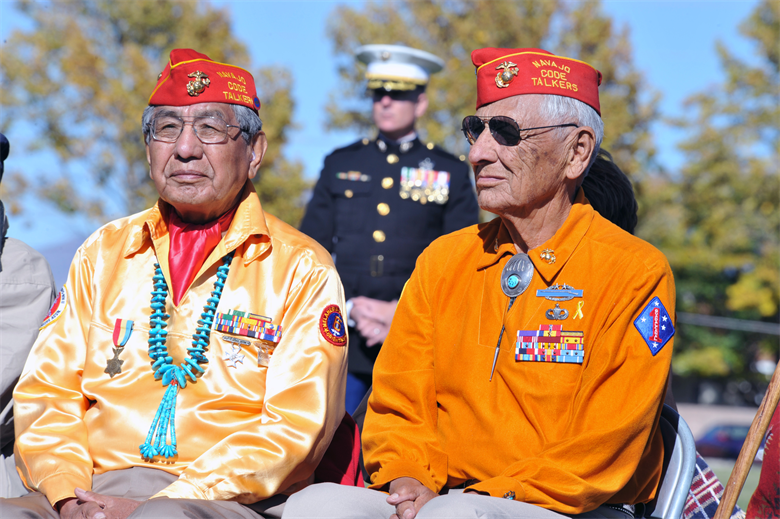
[VANAS] Many took advantage of World War I and subsequent wars because it was something we’ve always looked at as a way of protecting our home. People ask, “Why serve in the military when this government has done so much to our people to hurt our culture?” But we’ve always looked at the bigger picture. This is our home, it always has been and always will be, and we sign up to defend that.
How has the definition of “warrior” evolved since then among native communities?
[MEANS] A warrior was always somebody who fought for their native nation. For the most part, that was militaristically. But now that has expanded to fighting for your native nation in any context: legally, socially, culturally, politically.
Women are taking a tremendously active position in today’s battles because it’s no longer just about military prowess. It’s about intellectual prowess. It’s about cultural prowess. It’s wonderful to see so many native people from all walks of life fighting for their rights and sovereignty.
[HOTT] There are people who said to me that getting a college education is being a warrior. But, an obvious one is the number of native women in the military. It’s not easy for them because there are still traditionalists out there who think women should not be fighting.
That’s a big reason we included the story of Lori Piestewa, the first Native American woman to be killed in combat as a member of the U.S. military. What does that say about the warrior tradition that she felt strongly enough to die for it?
Do you think the military has exploited that willingness of Native Americans to fight?
[MACDONALD] Yes and no. There was exploitation, but our desire to maintain what belongs to us and protect our families is part of our desire to volunteer and protect our land.
[MEANS] Absolutely, whether consciously or unconsciously. Native Americans have this weird place in American culture where they’re part of America’s past in becoming the great nation. But at the same time, they’re still here. That’s why Native Americans have been relegated and confined within these boxes. When you think of an American Indian you think of Dances with Wolves. You don’t think of somebody wearing a suit or a tie.
It's cultural exploitation, but at the same time, because Native Americans have been forced into this horrible economic and cultural position on reservations, the U.S. and the military exploit that by providing the military as an option out of poverty and hopelessness.
[VANAS] It takes two to tango. Enlisted recruiters always have to hit quotas. But, we are kind of groomed from a young age to see this as an accessible option for us to fulfill that warrior path in a positive way. So, I don’t know that I would call it exploitation as much as I would call it finding willing partners.
[HOTT] I don’t think it’s horrible, but it does happen. The military knows the pickings might be easier. You have families with tradition, and young people might say, well, maybe I don’t want to go in, but everybody in my family did it and there’s a lot of pride in that. There’s a reason there are recruitment centers near reservations.
The U.S. has a history of celebrating native achievements only when it benefits the country — for example, punishing the Navajo for speaking their native language only to capitalize on it when it could be of use. Is there a sense a feeling used or abandoned among native veterans once they leave the military?
[MEANS] Yes, but the sad caveat is that that’s actually cultural wide and not just relegated to military service. The U.S. government has forgotten Native Americans as a whole. It’s part of the entire cultural push where natives are great as long as they’re only seen in a certain context. This is why the Dakota Access Pipeline resistance is interesting, because they broke out of that confine.
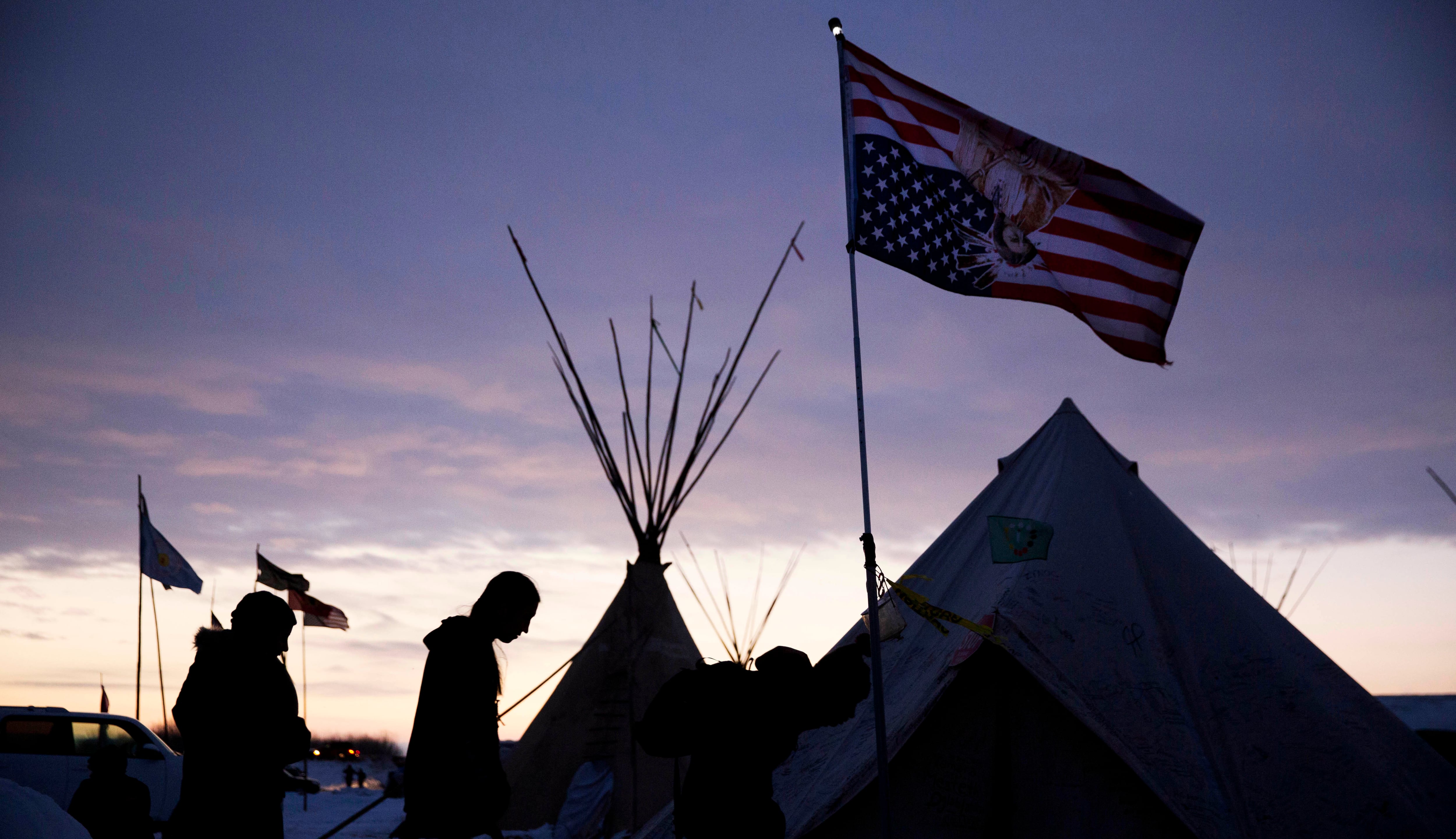
Native Americans are supposed to be people of the past. They’re supposed to be exotic, but mostly, what they’re supposed to be is quiet. When they raise their voice and make noise, the United States gets very uncomfortable. Abandoning Native Americans has been the M.O. of the U.S. since reservations were created as temporary reserves.
[MACDONALD] Yes. We — as matter of fact, every — American were needed to protect and preserve our freedom and liberty. We are first and foremost Americans and we love this country.
However, once our service was no longer needed, we were, in most cases, forgotten and left to fight to keep what is rightfully ours — our natural resources, water, and land were being exploited by energy companies and by our own federal government.
We have yet to achieve self-sufficiency and self-determination. More importantly, our treaty promises by “the great father” have yet to be fulfilled.
What was the perception of Native Americans in the military when you were in? How do you think the perception by non-natives has evolved?
[MACDONALD] During WWII, Marines and sailors treated us, in most cases, with respect as fellow warriors. We were all in it together. We survive if we stick together.
After all, bullets don’t discriminate.
Today, much has changed in the military in terms of respect and understanding of Native American culture and traditions. This is all for the good of America, for we are a diverse nation.
[VANAS] You’re always looked at as something that is of interest. My experience was good, although there were some tense moments.
For example, Sun Dance is a ceremony that was done by the Plains Indians. My medicine man was Lakota from South Dakota. He was my mentor, my spiritual leader, and I became a Sun Dancer. In the ceremony we pierce our chest — they put skewers in our chests on either side — and are tied to a tree, which is called the Tree of Life, or our antenna to the creator. We go up to the tree and back four times, and on the fourth time we dance backwards until we rip free. Sometimes it takes two minutes, sometimes it takes two hours. I’ve seen it take two full days.
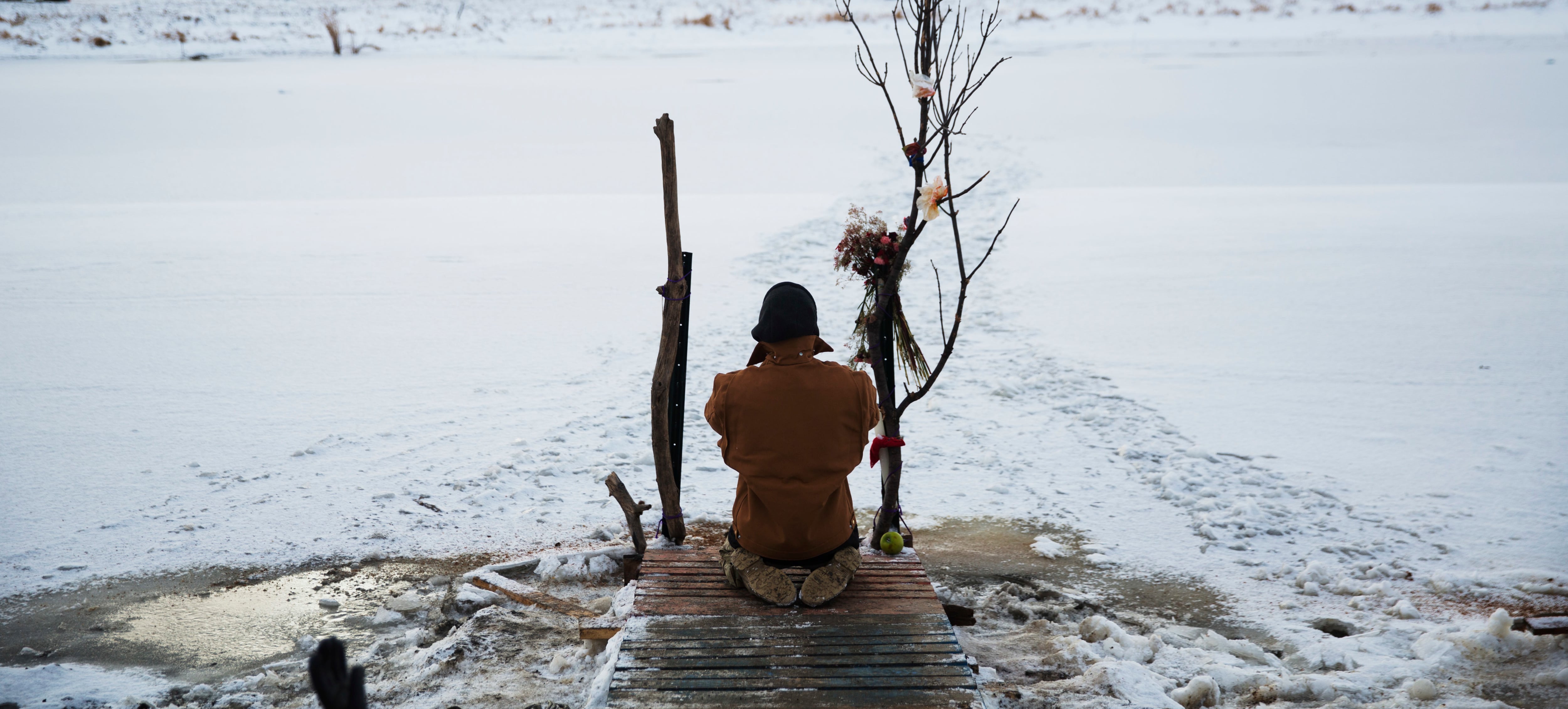
It’s about sacrifice and thanksgiving, but it leaves scars, obviously. When I was in the Air Force we had a volleyball game and one side were the shirts and one the skins. I was on the skin side and had finished Sun Dance a couple weeks before so I still had scars. A couple of colonels were talking amongst themselves in a way I could definitely feel the negative vibe and the judgment. I got so uncomfortable that I ended up leaving. I put my shirt back on and left the game. Moments like that when there’s a lack of understanding makes things tense.
The documentary discusses how Native American communities emphasize ceremonial cleansing after a service member returns home. What can greater U.S. society learn from how tribes reintegrate soldiers?
[MEANS] It’s tricky because the U.S. and native nations have such completely different worldviews. But, to a large degree, native nations look at the health of the community at large. Every person needs to be as productive as they can be, and needs to be spiritually and physically healthy to achieve that.
When someone has gone into combat, they need to be spiritually and emotionally cleansed of that trauma or guilt. So those kinds of ceremonies are really important to tell that person, “Everything you’ve done was for us. We appreciate it, and you’re still part of us.”
The U.S., to an extent, ignores that militaristic part of society because it’s not what we would consider a larger part of American culture. It has been separated to a tremendous degree. Most people have no idea what military service is like, what combat is like. So therefore, they have no empathy.
[VANAS] The reintegration process is one thing our native communities have always done a really good job of. It’s a common theme across Indian country of, “Now that this is done, here’s how you start your next chapter of your life within this community.”
It is healing and lets that person know they’re not on their own. There were things that were put in place to bring people back in a much smoother way. In the greater scheme, we have people leave the military, and it’s, “Good luck. Thanks for your service. You’ll figure it out.”
We do a great job of equipping our soldiers, but we need to greatly improve how we support those soldiers once they are out.
Thank you, Peter MacDonald, D.J. Vanas, Jeff Means, and Larry Hott for sharing your stories. Larry’s film, “A Warrior Tradition,” can be accessed through the PBS website.
J.D. Simkins is the executive editor of Military Times and Defense News, and a Marine Corps veteran of the Iraq War.
Claire Barrett is the Strategic Operations Editor for Sightline Media and a World War II researcher with an unparalleled affinity for Sir Winston Churchill and Michigan football.

